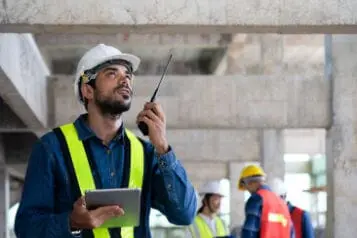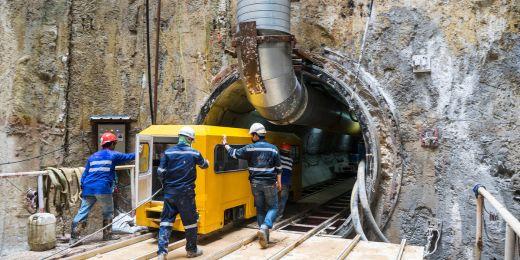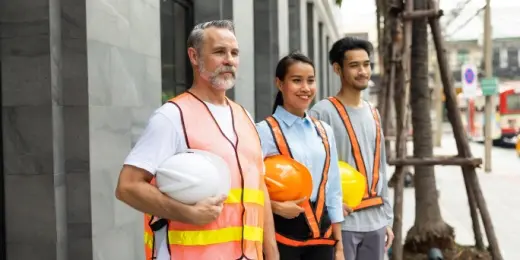What is Safety Communication?
Safety communication is basically the process of communicating different hazards and risks to all employees in a workplace. The goal is to reduce the chances of accidents since workers are aware of the risks they face throughout operations. Additionally, it deals with ensuring that all employees are familiar with the safety operations, procedures, and controls in the workplace and understand how to work with them. While it can be quite complicated and arduous, safety communication is absolutely essential in creating a safe and functional workspace.
Importance
Safety communication is such an important aspect of the modern workplace because it deals with educating employees about risks and hazards at work. It’s crucial that employees are aware of potential workplace hazards and risks, allowing them to make an active effort to avoid them. That way, it’s much easier for the safety team to reduce workplace accidents and incidents.
On top of that, safety communication is key to building a culture of safety in the workplace. To reduce accidents and ensure workers are always safe, it’s important to instill this culture in your workers. That way, they have safety as a top priority whenever they proceed with operations or accomplish tasks.
Lastly, safety communication is important in relaying employees’ rights and responsibilities in the workplace regarding safety. For example, employees have the right to refuse to perform tasks they deem unsafe. And the only way to ensure that they understand this right is through effective communication.
So, safety communication is very important in modern workplaces. Whether the organization works in the construction or advertising industry, it’s crucial to ensure everyone is safe through efficient and effective communication.
Benefits
The biggest benefit of employing a safety communication plan is protecting your workers. The best way to ensure that employees are safe on the job is by ensuring that they understand the risks they face and how to mitigate them. Additionally, it’s important for workforces to know and understand the different measures in place to improve safety.
That way, they are able to follow these safety measures and reduce the chances of an accident. An effective safety communication plan allows everyone in the organization to understand the importance of safety and how to establish a safe working environment.
Most of the time, organizations focus on establishing various safety measures, practices, and controls in the workplace. However, all of these will be completely worthless unless everyone in the organization understands and follows your safety plan.
When you establish a safety communication plan, you have a clear way of disseminating information to your workers. This can save you a lot of time and effort as you won’t have to worry about constantly figuring out how to relay specific messages to employees.
So, when you’re drafting your company’s safety practices, make sure that safety communication plays a big role. That way, you can rest assured that everyone on the team knows and respects safety regulations to reduce the chances of injuries and accidents.
How to Develop a Safety Communication Plan
Developing a safety communication plan looks different for every organization. After all, each company has safety practices that employees need to follow. So, you need to draft your safety communication plan around your existing safety practices and your company’s needs.
While every plan looks different, there are a few steps you may want to follow when creating one for your organization. That way, you truly leave no stone unturned and cover all the bases with the strategy. So, here are a few steps to developing a comprehensive safety communication plan:
- Identify Stakeholders – Make sure your plan identifies everyone who plays a part in safety communication, from employees and managers to directors and safety committees.
- Assess Needs – Every company has its own needs. It’s best to to conduct a proper assessment of your safety communication needs before you start creating a safety communication plan.
- Develop Your Channels – Effective communication relies on the right channels. So, choose convenient and simple communication channels that will allow you to disseminate information quickly.
- Implement, Evaluate, and Revise – Once you’ve created your plan, you’re ready to implement it. And once it’s in motion, evaluate its effectiveness and make changes if necessary.
Improve your EHS Management
Cultivate a safe working environment and streamline compliance with our EHS solutions.
Explore nowTools and Technology for Safety Communication
There are many different pieces of technology companies can use for safety communication. And if you choose the right tools, they can do wonders on how you communicate with each other within the company. Just like safety communication plans, it’s important to tailor your toolset to your company’s needs. However, here are some common tools you might find companies using to improve safety communication:
- Digital safety management systems
- Mobile apps and communication software
- Wearable technology like smartwatches
- Digital signatures
- Virtual and augmented reality
There are many ways to incorporate technology into your safety communication plan. But at the end of the day, make sure that you use the right tools that fit your company’s needs.
FAQs about Safety Communication
There are three basic types of safety communication: verbal, written, and graphic. However, some people argue that digital communication deserves a separate category. Using a combination of these types is essential for a holistic communication approach.
While developing a plan for safety communication can be complicated, practicing safety communication isn’t. A great example of safety communication is different signs and warnings in the workplace when entering hazardous areas.
Technology plays a huge role in safety communication efforts. Proper technology and tools allow companies to better disseminate safety messages and ensure the safety of employees.
The major barrier to safety communication is a lack of understanding between the sender and receiver. This is why it’s important for companies to put an active effort into ensuring everyone understands and receives safety messages.




